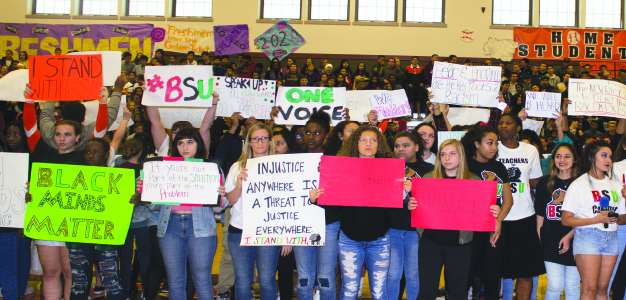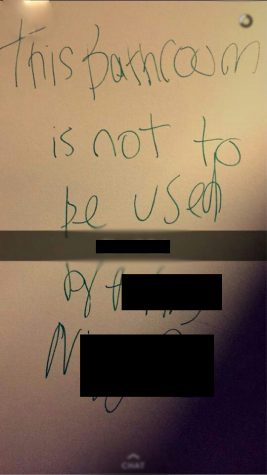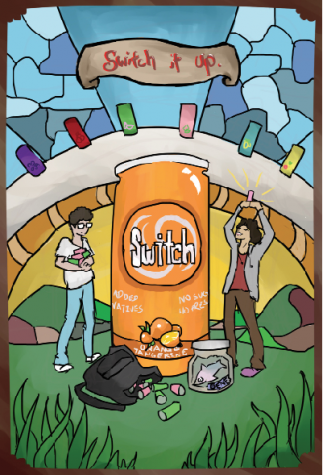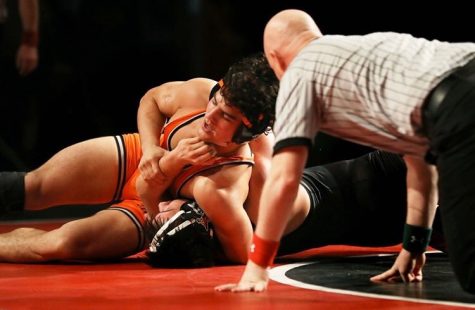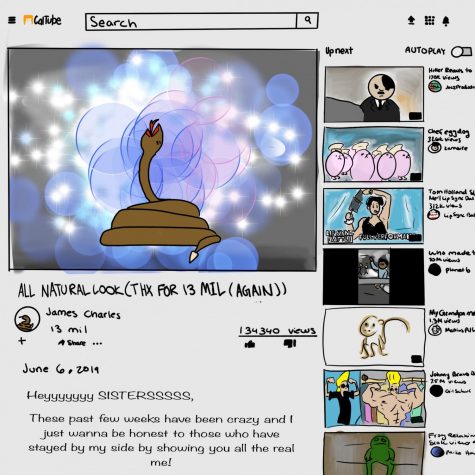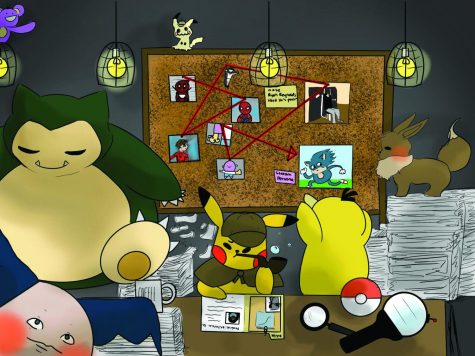Students stand up to racist graffiti
Parents, students angry by the way school handled situation
Cal students stand with members of the Black Student Union during the homecoming rally in protest of the recent racism that has appeared in the form of graffiti in bathrooms on campus.
Racism reared its ugly head on campus last month, destroying the feelings of safety, acceptance, and belonging felt by many students.
Students and parents are outraged with the way that school administrators have dealt with the racist graffiti that was scribbled on the walls of multiple bathrooms on campus.
The first instance of graffiti was found on Oct. 18 in the first floor men’s restroom in the World Language building above the urinals. The graffiti read “Whites” above one urinal and “Colored” above the other.
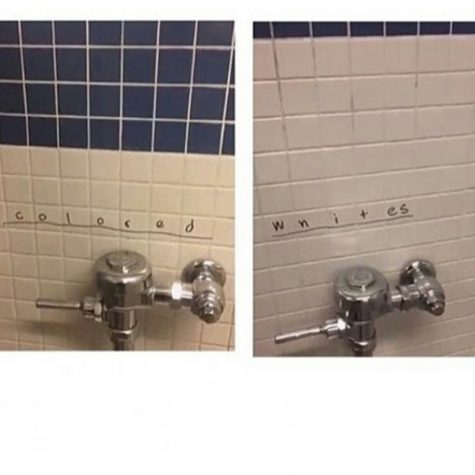
The graffiti was actually cleaned by the freshman boy who later confessed to writing it, and very few students were aware of it.
But when more aggressive racist graffiti was found in the third floor women’s bathroom on Oct. 24, questions were raised of why racism was not addressed campuswide after the first incident was brought to administrators’ attention.
“To walk in and see you are not welcome,” said Black Student Union president Alanah Winston, who read the messages “No n——s alowed(sic)” and “This bathroom is not to be used by f—ing n—–s.”
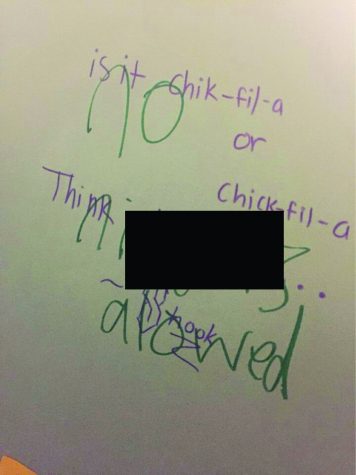
The n-word was also written on a hallway poster for homecoming.
“I feel unwelcome,” said Winston, who was interviewed by NBC News on Oct. 25 when the story made Bay Area headlines.
The backlash from the BSU was swift and organized and their emotions even more raw, sinceWinston and other students felt like school administrators tried to downplay the original graffiti and brushed off requests from BSU leaders to sit down and discuss solutions to racism on campus.
“We’re all just figuring out why no one has done anything so far,” Winston said immediately after the the graffiti in the women’s bathroom was brought to light.
Principal Sarah Cranford attended the BSU meeting on Oct. 27 to try and answer questions and concerns from both students and parents.
Cranford first addressed why she did not immediately sit down and meet with BSU officers after the first incident of graffiti.
“I apologize to the kids that came down and that I didn’t meet with you,” Cranford said.
The only explanation she offered for not meeting immediately with students was the business of her schedule.
“It’s hard and I hate it but I live with my calendar,” said Cranford. “We should have sat down, we should have settled it.”
At the meeting the floor was open to discussion and students and parents directly voiced their frustrations.
“This was so hurtful, we didn’t feel like we were being taken seriously,” said BSU officer Sierra Gard.
Many parents echoed her sentiment as they pressed Cranford about why nothing was sent out to parents after the first incident,
“We send out communication in response to massive rumors or something that deals with direct student safety,” Cranford said. “Last week didn’t fit the bill.”
This response caused frustration among those present at the meeting.
“Having something like that on the wall is a threat,” said one parent, who impolored administrators to re-evaluate what it considers rumors and threats.
Cranford also said her administrative team was unable to find the first graffiti in the boy’s bathroom because it was cleaned up.
“We couldn’t find the graffiti and have no idea who cleaned it up,” said Cranford.
After the second incident of racist graffiti, many parents leapt into action to support their teens and raise awareness of the racism at Cal.
Practically every local news station sent a reporter to the school for a segment after parents contacted them.
Images of the racist graffiti also went viral soon after on Twitter, receiving national attention from prominent social justice writer Shaun King and a retweet form 49ers quarterback Colin Kaepernick.
The father of one Cal student who spoke anonymousy to KTVU Fox 2 said when he contacted San Ramon police they hadn’t been informed of the incidents.
Parent Dayna Perilliat said she set up a meeting with Cranford after the second incident because she didn’t believe the issue was being properly addressed.
“I was under the impression that school administration was handling it,” said Perrilliat, who heard of the first incident from her daughter, senior Ashley Perrilliat. “It made me wonder if it was an ongoing pattern.”
Students and parents at the meeting also complained of the rumored five-day suspension received by the boy who confessed to the first incident of graffiti. Cranford immediately tried to halt any discussion of student discipline.
“We can not talk about student discipline at all,” she said.
But after further pressing from the frustrated parents and students at the meeting, Cranford eventually commented on the student’s consequences.
“I have not come to full determination of consequences of the student,” Cranford said.
Assistant superintendent Toni Taylor was also present at the meeting and confirmed that there has been no determination of final consequences for the student.
The student or students responsible for the graffiti in the third floor girls’ bathroom have not been caught.
“We take hate crimes really seriously,” Taylor said. “It’s one of the most egregious offenses a student can commit.”
Many students and parents spoke up to advocate expulsion for the student, arguing that anything less would show other students that it is OK to be racist on campus.
The meeting ended with an emotionally charged speech from Winston that moved many in attendance to tears.
“Racism is never going anywhere and we’ll face it everyday but remember how you carried yourselves today, unapologetic and unafraid,” Winston said.
Earlier in that day the BSU and other supportive students stood in the middle of the Event Center in front of the student body at the homecoming rally. They read a statement to students condemning racism in all forms on campus. They also raised up signs and posters in support of the BSU.
Their protest was joined by many teachers and hundreds of students, who left the bleachers and walked on to center court.
“Students in the BSU are doing an amazing job and we as teachers need to do everything we can to support them,” said teacher Troy Bristol.
BSU adviser Eghosa Obaiza was proud of the BSU for their resilience and happy with how well the BSU’s message was received on campus.
“I hope there’s some longevity with those sentiments,” Obaiza said.
The BSU also drafted an open letter to administrators detailing how they felt and provided a list of demands to make campus safer and more accepting of people of color. Some members of the BSU also marched in the homecoming parade on Oct. 28.
“They’ve done a phenomenal job. The BSU helps those who are voiceless have a voice,” said Dayna Perrilliat, who describes her feelings as a mixture of shock, anger, disappointment, and sadness. “They’ve done a great job helping folks deal with the situation.”
Last week, the school organized a town hall-style meeting that featured Golden State Warriors player James Michael McAdoo, who spoke to students about his limited experiences with racism.
“I’ve never had to deal with racism, but I have seen it,” said McAdoo, who is African American.
After the meeting, McAdoo met privately with students from the BSU. He answered questions and offered students advice about how to deal with racism.
There was also a lunchtime forum for students, parents and staff, as well as a staff discussion during the weekly staff meeting.
The forum allowed students to have open disscussions and be listened to by school and district officials.
“Today we gave power to the students and the community and that’s the most impactful,” said Obaiza.
Many hope this forum is the first step in the right direction.
“I think this idea is really postive,” Winston said. “If continued it will be really effective.”
Parents were also ever present at BSU meetings offering advice and support to students.
“California High must show that there is no tolerance for racism and bigotry,” parent Petrina Beugre said at one of the meetings.
No one knows what prompted the outbreak of racism on campus but all agree that it is an issue that needs to be addressed.
“Where’s the welcome?” said Ashley Perrilliat. “There is so much hatred for no reason.”
She did not understand the motivations behind an action like this.
“It’s not funny,” Perrilliat said.
Other teachers were also left shocked and puzzled by recent outbursts of racism. Obaiza blamed partly the school culture and the climate created by the fracturing presidential election.
“Bigotry has become a norm because of the modern political climate,” Obaiza said.
For the students of the BSU the motivations behind the racism do not matter. They remain committed to being a voice for students who feel persecuted and unsafe on Cal’s campus.
“It won’t be like this forever,” Winston said. “We’re gonna make a change on this campus.”
